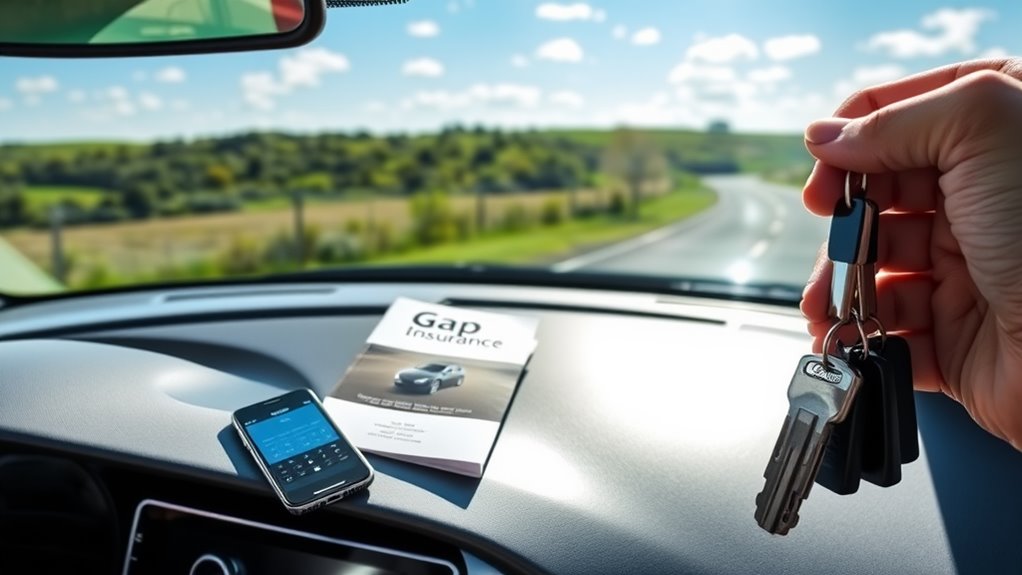When it comes to leasing a car, understanding gap insurance is essential. You'll want to check your lease agreement first to see if it's required. Then, compare different providers for the best coverage and price. Keep in mind that you need extensive and collision insurance before you can even consider gap insurance. Knowing the claim process and its limitations can save you from unexpected expenses. So, what should you be aware of next?
When you lease a car, understanding gap insurance is important, as it can protect you from significant financial losses. Gap insurance covers the difference between what your leased vehicle is worth and what you still owe on the lease. This is particularly significant because leased cars tend to depreciate rapidly, often leaving you with a financial gap if the vehicle is stolen or declared a total loss. By investing in gap insurance, you shield yourself from the unexpected costs that can arise in these unfortunate scenarios.
You can purchase gap insurance from either an insurance company or the dealership. The cost varies based on factors like the duration of the lease and the type of coverage you choose. Policies generally last for the entire lease term, offering you peace of mind throughout your leasing experience. Gap insurance is often required due to rapid vehicle depreciation, making it a crucial component of your leasing strategy.
It's essential to recognize that thorough and collision coverage are prerequisites for adding gap insurance, ensuring you have a solid base policy in place.
When your vehicle gets stolen or is deemed a total loss, gap insurance comes into play. First, you'll file a claim with your primary insurance to determine the actual cash value (ACV) of your vehicle. After that, you'll file a separate claim with your gap insurance provider to cover the remaining balance on your lease. This two-step process is crucial in ensuring that you won't end up owing money on a vehicle you can no longer drive.
You can choose to pay for gap insurance either as a one-time fee or rolled into your monthly lease payments, making it flexible to fit your budget.
There are various types of gap insurance to evaluate. Finance or Contract Hire GAP Insurance covers the difference between your insurance payout and your outstanding lease. Vehicle Replacement GAP Insurance, while the most expensive option, replaces your vehicle with a similar one. If you're leasing a luxury or high-value vehicle, gap insurance becomes especially significant, as these cars can depreciate even more quickly than others.
Different providers may offer different coverage limits, so it's smart to shop around for the best deal.
While gap insurance provides substantial benefits, there are some limitations. It doesn't cover lease penalties or excessive mileage fees, so you'll need to be mindful of your lease agreement's terms. Additionally, some insurance providers offer alternatives like loan/lease payoff coverage, which you may want to explore.
Conclusion
Maneuvering gap insurance for your leased car can feel overwhelming, but it doesn't have to be. By understanding your lease agreement and comparing different options, you'll find the coverage that fits your needs. It's surprising how many people overlook the importance of all-encompassing and collision insurance first. Once you've got those in place, gap insurance becomes a smart move to protect against depreciation. With a little research, you can secure peace of mind on the road.

